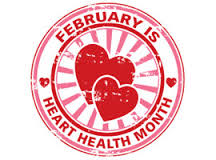Nurses know patients look to them as role models. Even if they don’t always like being held to a higher health standard, modeling healthy behaviors is an important step to communicating with patients. But it’s sometimes just as important to see that even nurses struggle with living a heart-healthy lifestyle, too.
Even the best role models aren’t always perfect. “We are all human like our patients are human,” says Lynne Braun, PhD, CNP, FAHA, FPCNA, FAAN, of the Rush University Medical Center’s Heart and Vascular Institute in Chicago. “We can talk openly and honestly about strategies for heart health. Everything starts in the sincerity of how we communicate to our patients.”
As a board member of the Preventive Cardiovascular Nurses Association (PCNA), Braun says using all the tools available to you to teach your patients about heart health will help you come up with creative solutions.
Having open and honest discussions about heart health is especially important for minority populations. No matter what your heritage, Braun says noting specific risk factors for certain populations helps patients take control of their choices to make better, healthier decisions.
“African Americans have more high blood pressure than whites,” says Braun. “If I am treating a patient for high blood pressure and counseling them on medications and lifestyle changes, I will be up front and say the prevalence of high blood pressure for them is higher.”
Asking about family history can also offer clues to higher risk for cardiac problems as well. “I will say, ‘I bet one of your parents had high blood pressure,’” says Braun. “And they usually say, ‘Yes.’” For some minorities, the risk for complications from high blood pressure is higher, too, and can have tremendous impact on their heart health. So for some minority populations, it’s essential that they work with their nurses to control their blood pressure and other cardiac risk factors to keep their hearts healthy.
When talking to patients, it helps to keep cultural norms and preferences in mind as well. Food, for example, is an obstacle for many people.
“Food is a method of bringing people together,” says Braun. “Food is a vehicle to help us enjoy being with other people, so we don’t want to change that.” Gathering for a meal is often a great stress reliever on its own and that alone is good for patients’ heart health.
But if they are sitting down to regular meals that are salty or high in fat, their overall health is going to take a hit.
“Ask what are typical meals for them,” says Braun so you’ll understand what patients’ normal eating patterns are. Then you can suggest how to prepare favorite meals in a healthier way. With small changes, the fat and salt can be reduced while the food still has the comfort and appeal it did before. “It can still taste good even if it’s prepared differently,” she says.
Nurses have lots of tools at their disposal to help patients. PCNA offers a Heart Healthy Toolbox for nurses that includes suggestions for exercise, eating, sleeping, a smoke-free lifestyle, and stress. Even something as easy as providing healthy recipes or cookbooks can get patients started on the right path.
Nurses are in particularly good positions to help their patients adopt changes that will improve heart health. “Nurses have a close relationship with patients,” says Braun. “We can discuss these issues, and we take the time to do it.”
- Is the FNP Program Right for You? - April 24, 2024
- WOC Nurses Week Highlights Specialty - April 16, 2024
- Honoring Radiology Nurses Day on April 12 - April 12, 2024



